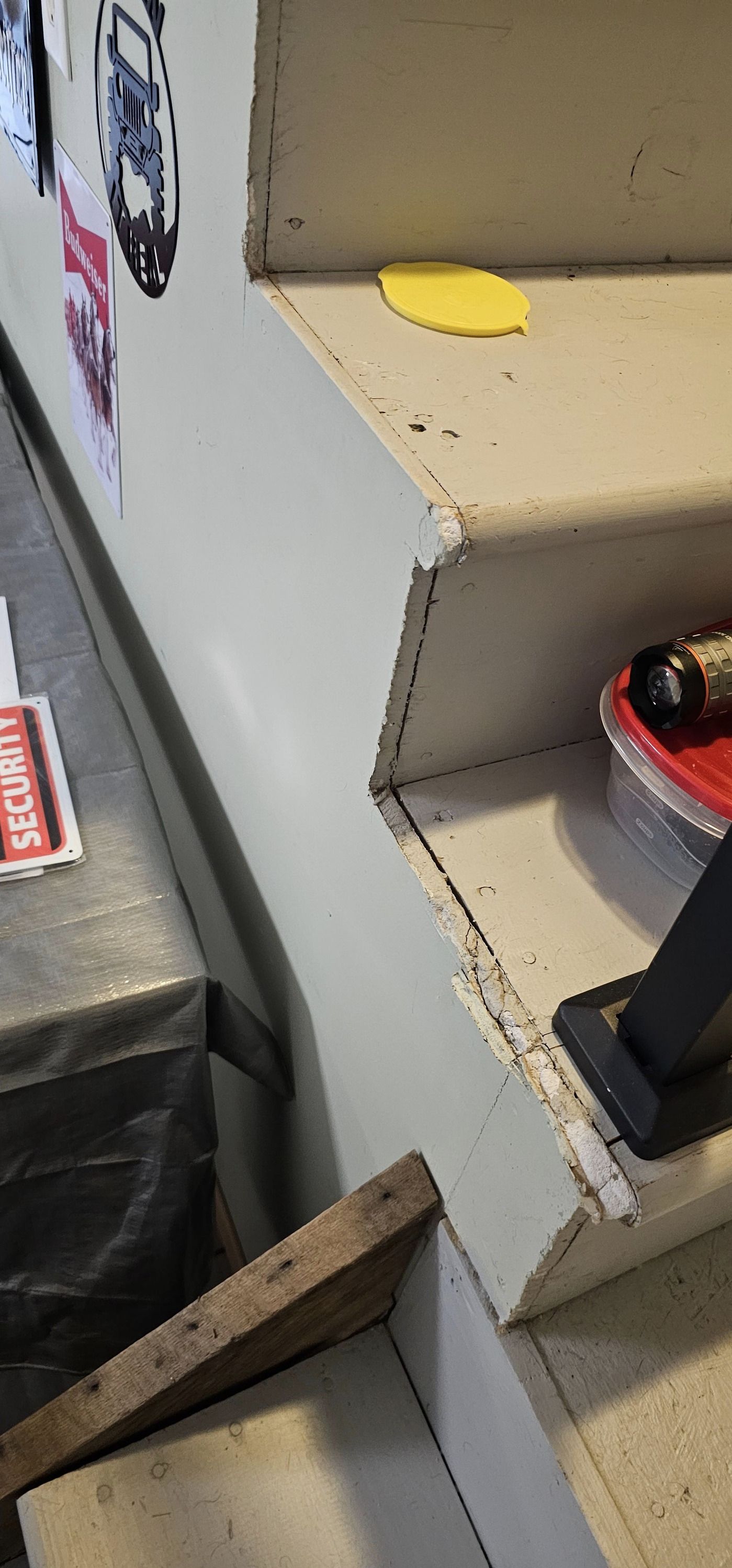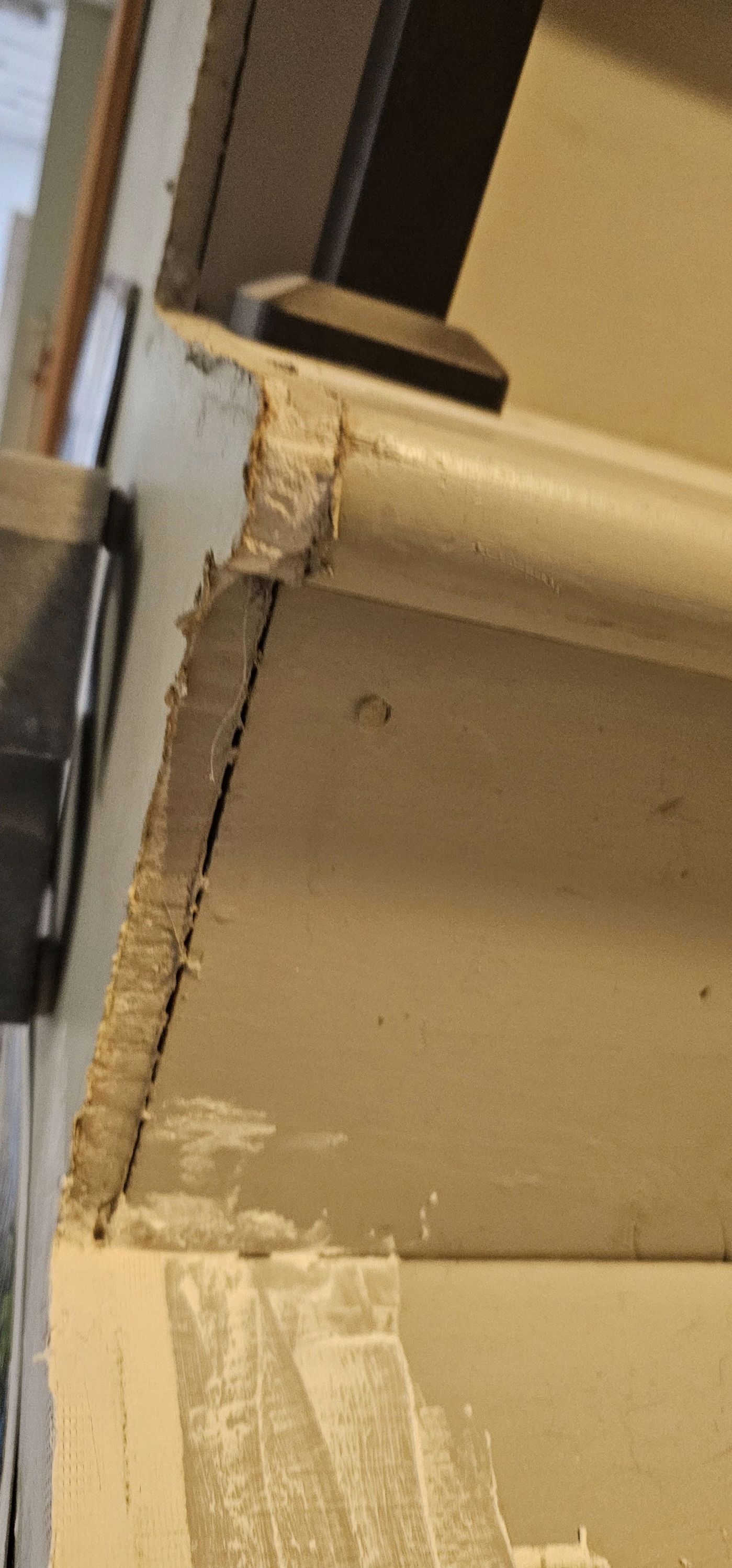How can I improve the appearance of the drywall edge along my basement steps without having to replace it entirely?
10 months ago
Last Updated: September 6, 2024
Hey, do you know how I can fix up the drywall edge by the basement steps and make it look nice without having to replace the whole thing right now?


Consider adding tread extensions or covers with returns
Do you have any links that demonstrate what is required?
Check out at stairparts.com
I would finish it off myself
Do you have any examples?
I don’t agree with .
Was not helpful at that time.
Those stairs should have been trimmed and finished before the drywall went up. I can’t think of a quick, cost-effective solution for that. It needs to be done properly.
You can get creative with some corner bead if you want.
How can I do that?
By enclosing the perimeter
Using paper-faced corner bead could be a good choice
Mistakes were made before we got to this point. Lol
How fancy are you looking for?
A quick and easy solution would be to trim it down a bit and cap it.
I would attach a stringer to the end and cover them with carpet.
Or attach a stringer to them and cover them.
Or attach a stringer to them, which is routed out to fit over the stair treads and risers.
Wooden trimming
I’ve never come across anything like this. Best of luck!
Do you know why this is happening? 🤔
Anthony makes a good point! Use a 5/4″ thick stringer and cut the sheetrock along the bottom of the stringer to allow for trim at the bottom for a seamless look.
I recommend holding off on making changes until you’re able to do it accurately. We’ve already taken enough shortcuts with this messy work. Let’s not make it worse with more mistakes. Wait until you can do it properly.
Please provide an update in this thread no matter what you decide to do. I’m really curious about how it turns out!
Step back and snap a side view photo of the entire wall, as well as a front view, and I can sketch out a design for you
Hey , could you lend me a hand as well, David?
‘t forget to lock the door before leaving the house.
Please remember to water the plants while I am away.
I cannot make it to the meeting tomorrow.
Cut the drywall at the same angle as the stairs slope. Then fill in the area with a long 1×6 and use a router to match the edge to the stairs. I’ll sketch it out and share another picture soon
Is asking, how do I accomplish this in my setup?
The person who built your stairs did a pretty bad job. It’s not ideal to have steps with different rise/runs in various spots. They should have been consistent throughout. The first step has a larger drop than the rest. If it were me, I would suggest keeping the drywall on the side and using a router to round off the edge of your stairs. Make sure to match the sides to the front rounded edge. When it comes to the corners where the drywall meets the stairs, consider adding some trim – similar to what I had on my old stairs in the photo. Just a simple but nice touch to enhance the transition from drywall to wood.
Let’s make sure it aligns with the steps below
The 1×6, 1×12, or a similar 1×6-1×12 piece should be shaped to match the colored area and align with the edges of the stairs.
I didn’t include that in my initial sketch.
But you have 2 options at the marked areas. Depending on how the drywall meets the wood.
You can use quarter round or white caulk.
To attach it to the stairs, you can use 2-inch trim nails.
Apply wood filler and wood glue at the wood-to-wood junction on the top surface, then sand it smooth once it dries and repaint the wood/stairs.
No content
No content
This is awesome! Great job.
Remove the drywall and finish it off
How about that?
When you say ‘cut it back,’ what exactly do you mean?
Can you show me some examples of what can be done with trim outs?
There’s already a stringer concealed behind the drywall
1×12
Buy a 12″ wide bullnose shelf board that is long enough for the stairs. Secure it to the side of the stairs using screws with the bullnose facing up, just above the stair treads. This way, the stair bullnose will meet the flat area of the shelf board before it starts to round over. Run a pencil along the bottom of the shelf board to mark where it meets the drywall. Remove the shelf board, cut out the drywall from that line, and then install the shelf board in its place. This will give you a finished look for the outside stair skirt that you can be proud of.
Could you help me with finding a picture of the final look from this amazing writeup?
The stair nose height fascia board in this photo is similar to what I mentioned. Picture it without the handrail and with a wall extending down to the ground.
Hey Jeff, thanks for sharing that interesting design! Just a thought, if we remove the sideboards it would make the space much easier to clean and also give the room a more open and airy feel.
Hey , not my favorite style for exterior stairs either. However, the original poster was looking for a simple solution and what I recommended seemed to fit the bill, while getting rid of the messy drywall appearance.
Hey , you could try using a skirt board like he mentioned and then cutting your rise and out of it if you want the open ends. Basically creating a stringer out of trim material that caps the end off. You’d need to cut the rock back though. The ideal method is to extend your treads and risers beyond the drywall and skirt board, but it might be too late for that now. Unfortunately, you’d have to redo all your treads and risers with new material.
I’d remove the drywall and put in a skirt
Remove the drywall where it meets the ends of the treads exclusively. Use some 5/4 x 1 1/2 to craft end caps for the treads. Then address the exposed edge of the drywall on the riser by attaching drywall corner bead and finishing with quick mud.
Swap it out with plywood.
Create a structure resembling an inverted stringer and carve out a space for the bull nose to be placed over the existing joint. Next, trim the joint connecting that stringer to the drywall. Keep in mind that this is simply a temporary solution, as the proper fix requires replacing the drywall.
Have some tape handy and be patient